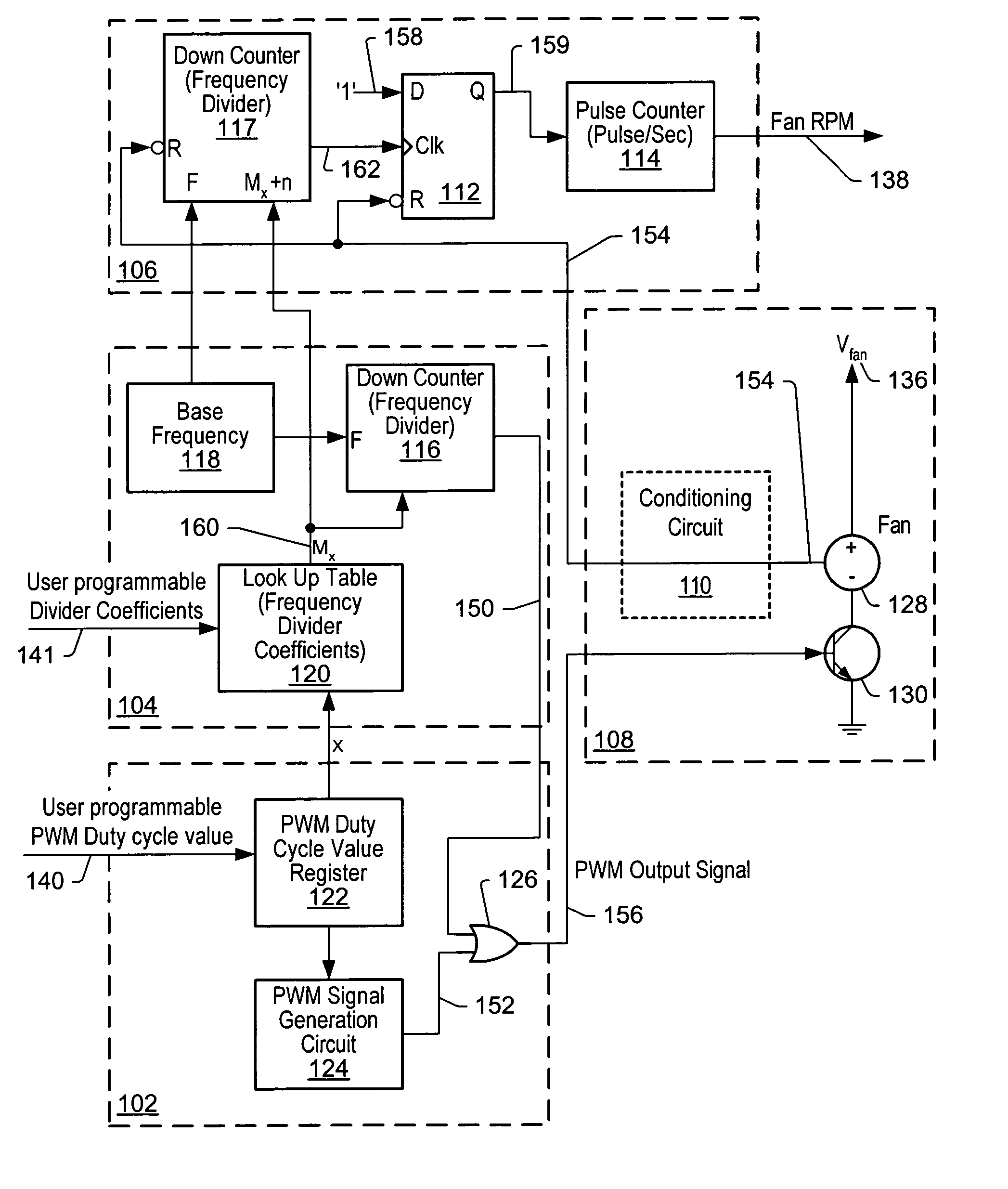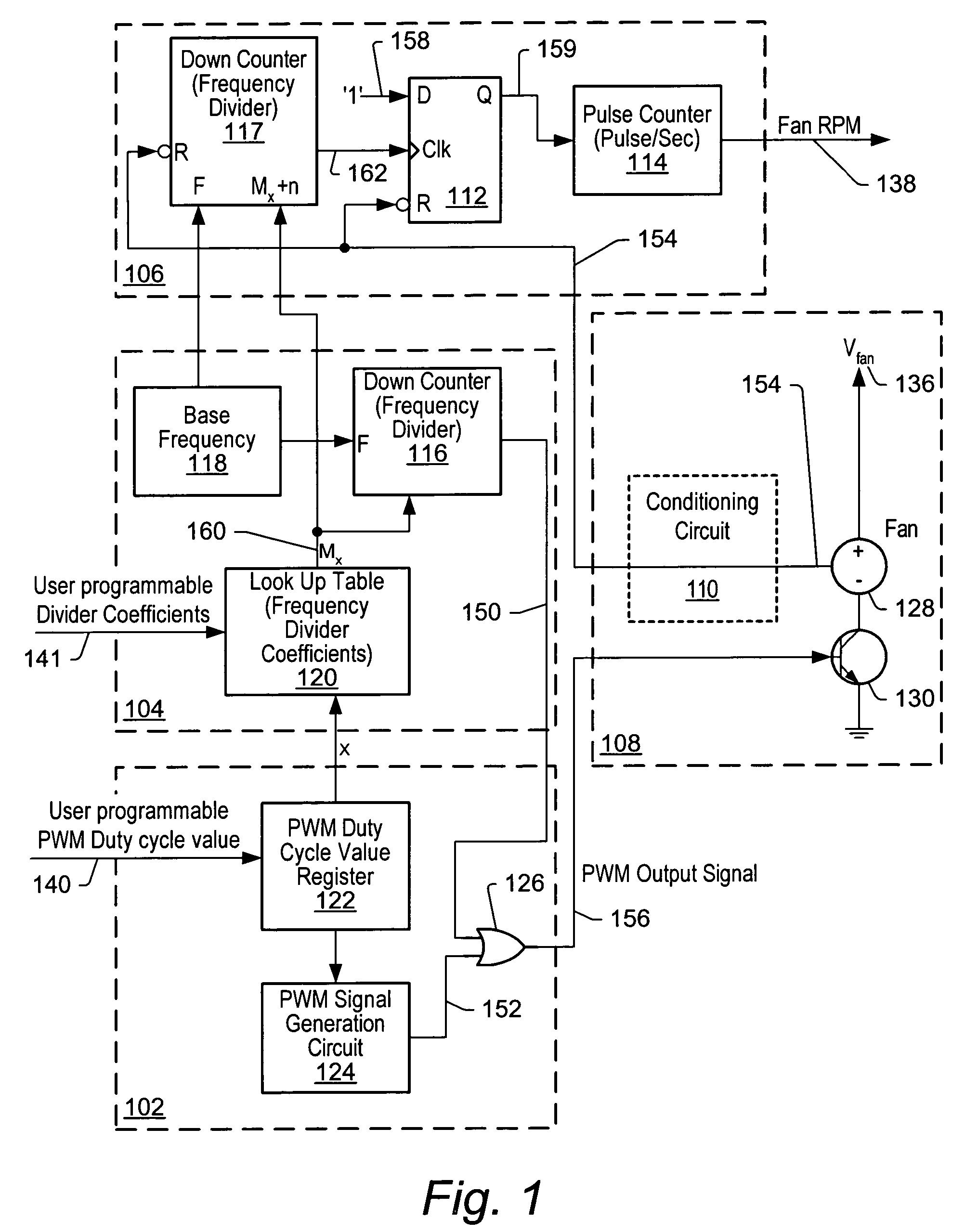Method and apparatus to achieve accurate fan tachometer with programmable look-up table
a fan and tachometer technology, applied in the direction of motor/generator/converter stopper, dynamo-electric converter control, instruments, etc., can solve problems such as worse problems, achieve accurate measurement of fan speed, minimize audio noise and sensitivity to electrical noise, and facilitate system design.
- Summary
- Abstract
- Description
- Claims
- Application Information
AI Technical Summary
Benefits of technology
Problems solved by technology
Method used
Image
Examples
Embodiment Construction
[0020]As used herein, a “trigger” signal is defined as a signal that is used to initiate, or “trigger”, an event or a sequence of events in a digital system. A trigger signal is said to be in a “triggering state” at a time when it initiates a desired event, or sequence of events. A periodic trigger signal may commonly be referred to as a “clock”. In a “synchronous” digital system, generally a clock, commonly referred to as a “system clock”, may be used for initiating most events, or sequences of events. An example of a triggering state may be, but is not limited to, a rising edge of a pulse of a clock in a synchronous digital system. A “frequency” of pulses refers to a number of pulses that may appear within a selected unit period of time. For example, if twenty pulses appear within duration of one second, then the frequency of the pulses is 20 Hz.
[0021]When an event, or a sequence of events, is said to be initiated “in response to” receiving a stimulus signal, it may be implied tha...
PUM
 Login to View More
Login to View More Abstract
Description
Claims
Application Information
 Login to View More
Login to View More - R&D
- Intellectual Property
- Life Sciences
- Materials
- Tech Scout
- Unparalleled Data Quality
- Higher Quality Content
- 60% Fewer Hallucinations
Browse by: Latest US Patents, China's latest patents, Technical Efficacy Thesaurus, Application Domain, Technology Topic, Popular Technical Reports.
© 2025 PatSnap. All rights reserved.Legal|Privacy policy|Modern Slavery Act Transparency Statement|Sitemap|About US| Contact US: help@patsnap.com



